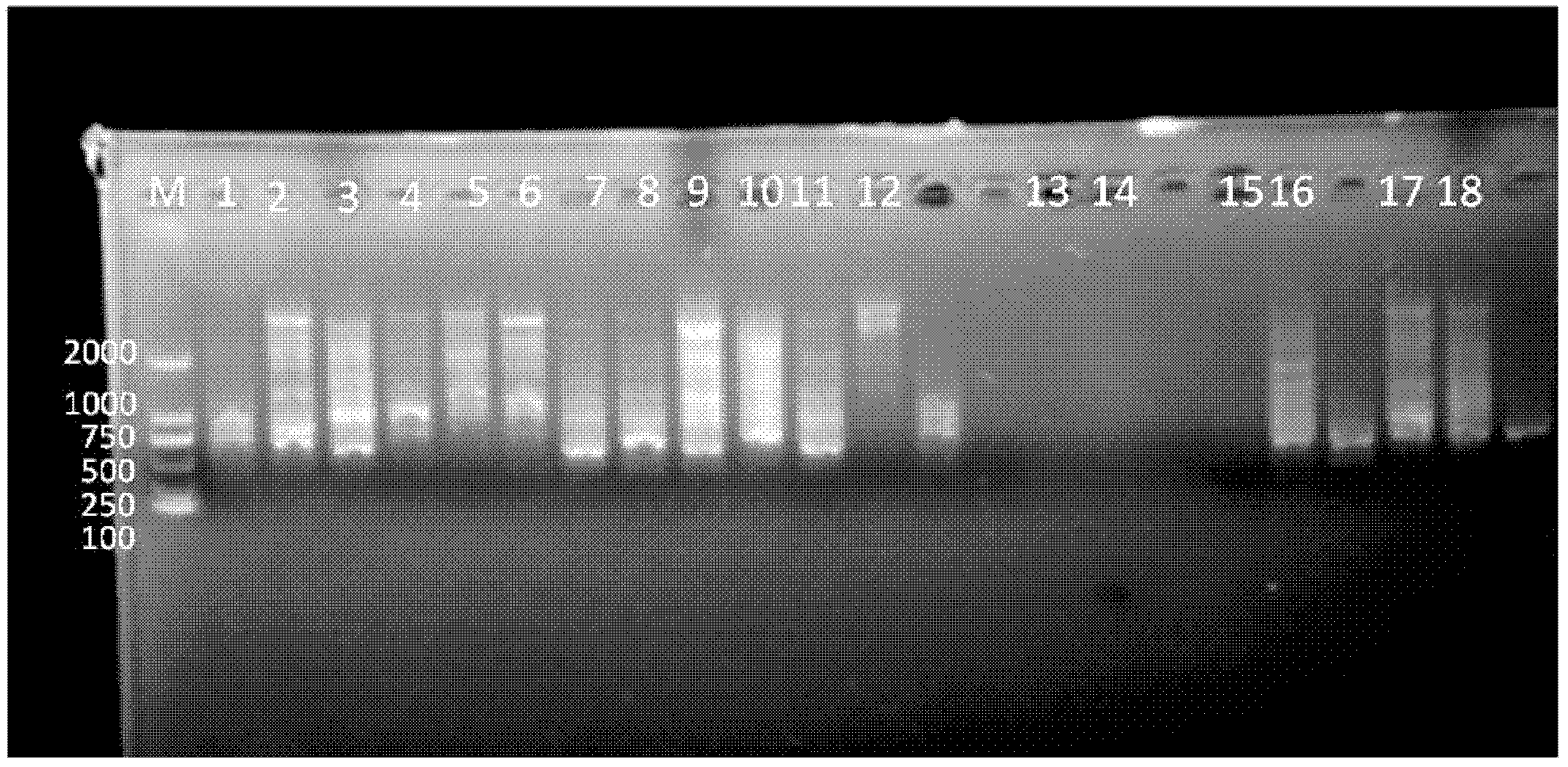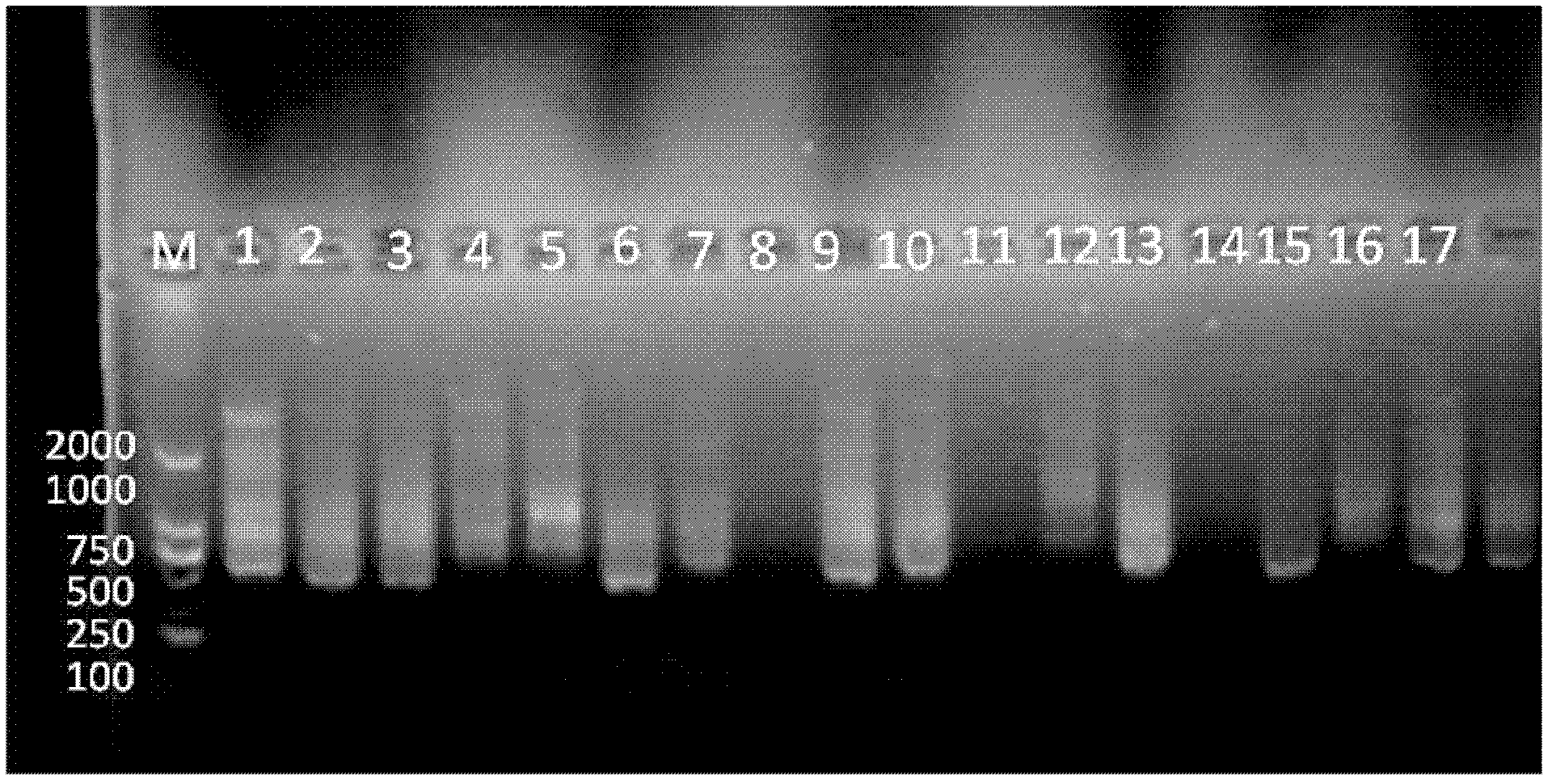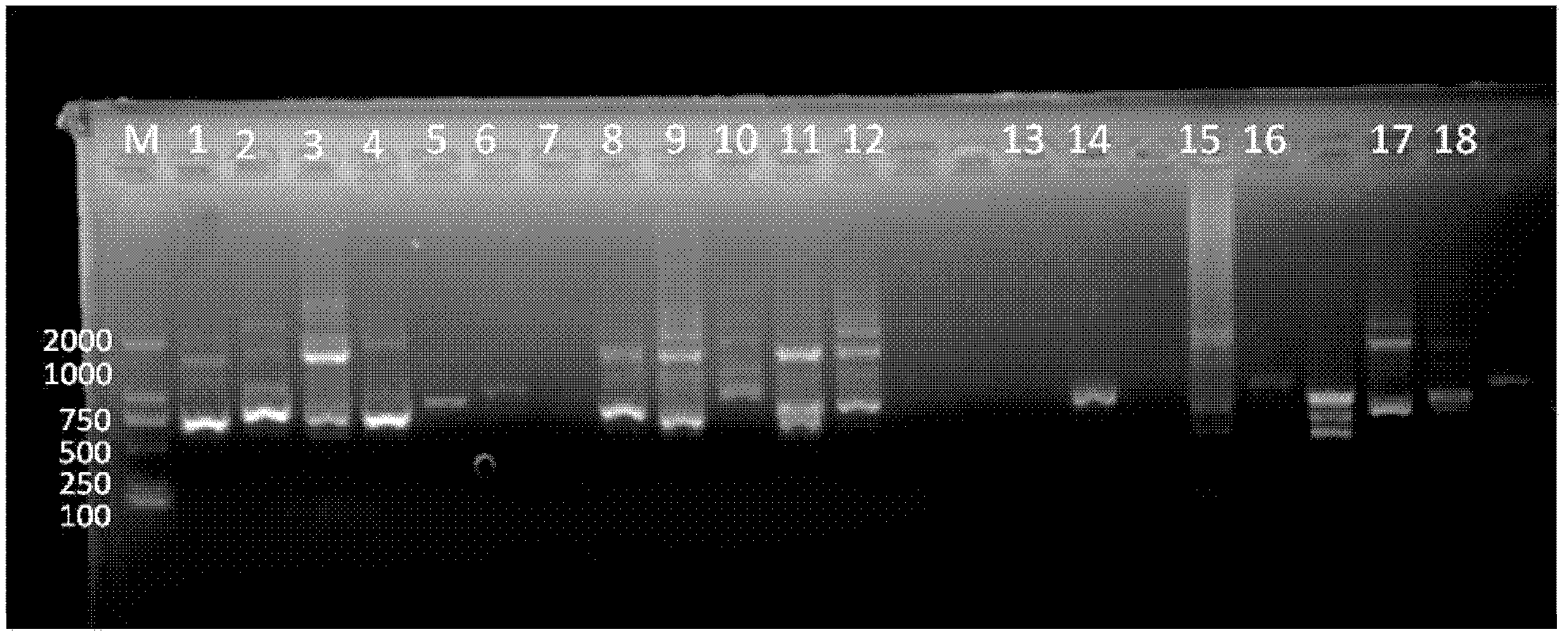Method for building an ISSR (inter-simple sequence repeat) fingerprint applicable to distinguishing and identification of Ulmus varieties
A fingerprint and variety differentiation technology, applied in the field of ISSR fingerprint construction, can solve the problems of high cost, seasonal restrictions, long identification cycle, etc., and achieve the effect of simple operation and stable results.
- Summary
- Abstract
- Description
- Claims
- Application Information
AI Technical Summary
Problems solved by technology
Method used
Image
Examples
specific Embodiment approach 1
[0030] Embodiment one: the ISSR fingerprint spectrum construction method suitable for Ulmus species distinction and identification is carried out in the following steps:
[0031] 1. DNA extraction:
[0032] Using adult plants of different elm species as materials, take new leaves and use the modified CTAB method suitable for extracting elm DNA to extract DNA, take part of the DNA solution to measure its concentration, dilute to 20ng / uL, and store it at -20°C for later use;
[0033] 2. ISSR-PCR amplification and electrophoresis detection:
[0034] In 25μL reaction system, 10×Buffer (Mg 2+ free) 2.5μL, dNTPs 0.25mmol / L, primer 800pmol / L, DNA template 30ng, Taq enzyme 1.5U, MgCl 2 2.5mmol / L;
[0035] The PCR amplification program conditions are: pre-denaturation at 94°C for 5 minutes, 35 cycles, each cycle includes denaturation at 94°C for 45 seconds, annealing for 1 minute, extension at 72°C for 1.5 minutes, extension at 72°C for 6 minutes after the cycle, and storage at 4°C...
specific Embodiment approach 2
[0056] Specific embodiment two: what this embodiment is different from specific embodiment one is that the concrete kind of elm used in the step 3 is as follows:
[0057]
[0058] Mapping varieties 1 to 9 were collected from Maoer Mountain and Heilongjiang Forest Botanical Garden in Heilongjiang Province; mapping varieties 10 to 18 and identification varieties 1 to 17 were collected from Baiwa Forest Farm in Jinxiang County, Shandong Province. Others are the same as in the first embodiment.
[0059] The elms in this embodiment can be obtained by purchasing.
Embodiment
[0061] A kind of ISSR fingerprint spectrum construction method suitable for Ulmus species distinction and identification is carried out as follows:
[0062] 1. DNA extraction:
[0063] Ulmus species collected in Heilongjiang Province and Shandong Province, a total of 35 adult plants of Ulmus species were used as materials, and DNA was extracted from new leaves using the improved CTAB method suitable for extracting Ulmus DNA, and part of the DNA solution was taken to measure its concentration, and diluted to 20ng / uL , stored at -20°C for later use;
[0064] 2. ISSR-PCR amplification and electrophoresis detection:
[0065] In 25μL reaction system, 10×Buffer (Mg 2+ free) 2.5μL, dNTPs 0.25mmol / L, primer 800pmol / L, DNA template 30ng, Taq enzyme 1.5U, MgCl 2 2.5mmol / L;
[0066] The PCR amplification program conditions are: pre-denaturation at 94°C for 5 minutes, 35 cycles, each cycle includes denaturation at 94°C for 45 seconds, annealing for 1 minute, extension at 72°C for 1.5...
PUM
 Login to View More
Login to View More Abstract
Description
Claims
Application Information
 Login to View More
Login to View More - R&D
- Intellectual Property
- Life Sciences
- Materials
- Tech Scout
- Unparalleled Data Quality
- Higher Quality Content
- 60% Fewer Hallucinations
Browse by: Latest US Patents, China's latest patents, Technical Efficacy Thesaurus, Application Domain, Technology Topic, Popular Technical Reports.
© 2025 PatSnap. All rights reserved.Legal|Privacy policy|Modern Slavery Act Transparency Statement|Sitemap|About US| Contact US: help@patsnap.com



